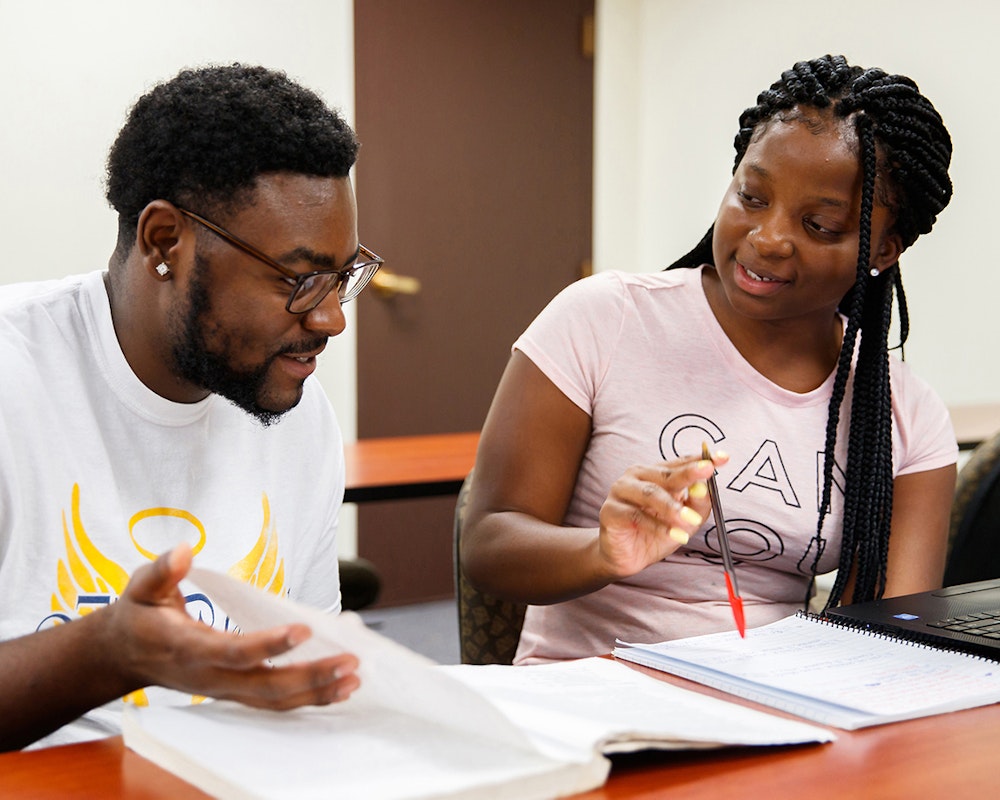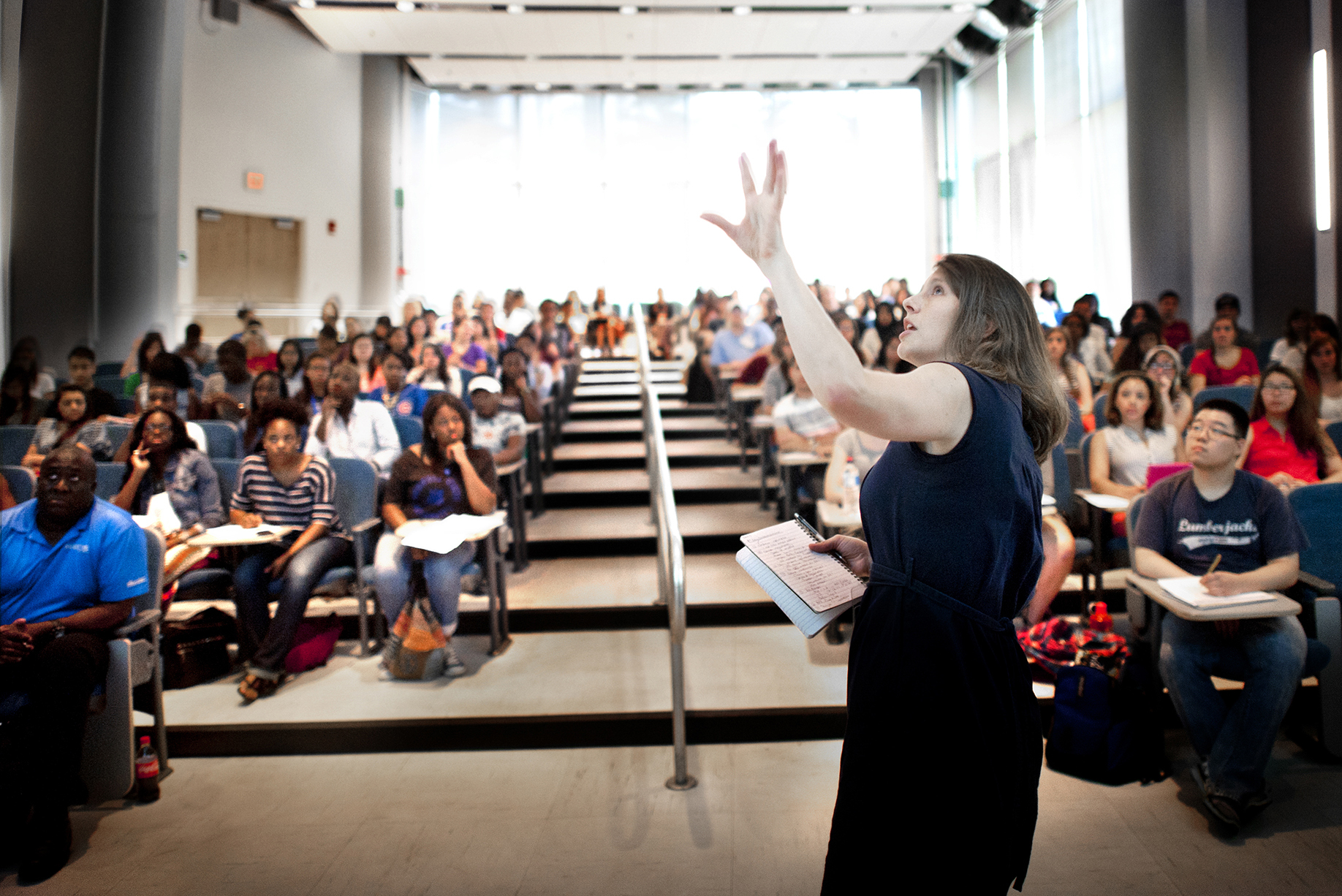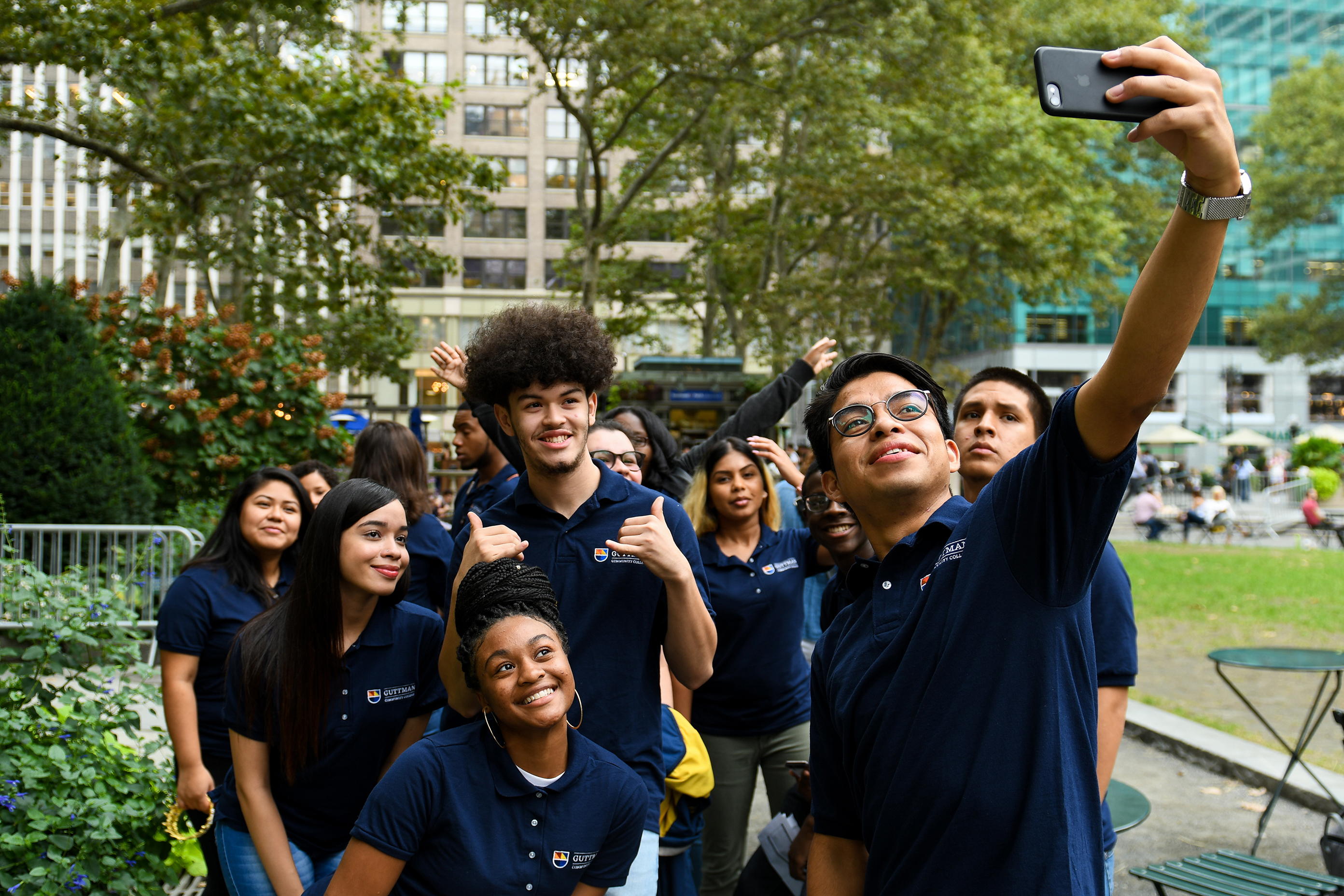
Improving Quality, Access, and Affordability
How three institutions are getting it done
American colleges and universities need to ensure that the students of today and the future receive better career preparation than they are currently getting: only six in ten employers say that recent graduates have the capabilities needed to succeed in entry-level roles, according to the Association of American Colleges and Universities’ 2021 employer survey report. That means higher education institutions must improve the quality of the learning they offer to better prepare students for future jobs. It’s also urgent to extend more equitable access to education—and therefore to career opportunities and financial security—to underserved groups. However, the impact of enhancing quality and access will be blunted if, simultaneously, we do not address the affordability of that education—for both students and institutions.
As higher education continues to reel from the effects of the COVID-19 pandemic, it might seem like the worst time to consider such issues. But it might, in fact, be an ideal time. Leaning into the crisis and inching forward can be rewarding and lead to long-lasting success. It might also seem impossible to improve quality, access, and affordability simultaneously. But, as the institutions I have studied demonstrated, it is indeed possible to improve all three areas at once.
From 2016 to 2020, I studied the recent histories of how five institutions and the online College for America programs deliberately developed the capacity to make what I call “3fold gains” by improving quality, access, and affordability. The five institutions are Georgia State University, Governors State University in Illinois, Guttman Community College in New York, the University of Central Florida, and the University of Central Oklahoma. All the institutions are public, while the College for America programs are part of Southern New Hampshire University, a private institution. The funded research of the different institutions and College for America programs varies from meager to huge. The undergraduate enrollments range from about one thousand to more than sixty thousand. Guttman Community College and the College for America programs were founded around ten years ago, designed from the start to foster quality and equity in affordable ways. The other four institutions had been around for many decades before they began to work on improving institutional outcomes.
For each case history, I analyzed the past ten to twenty years of work of these six entities. My inquiry included site visits, study of institutional records, and telephone and face-to-face interviews with more than a hundred administrators, faculty, and staff. I augmented this with study of relevant literature and reflections about what I’ve learned from fifty years of work nurturing innovative improvements in higher education as a program evaluator and researcher, grant-maker, consultant, professor, and vice provost for teaching and learning. The findings and ideas in this article are drawn from my new book, Pursuing Quality, Access, and Affordability: A Field Guide to Improving Higher Education.

All six entities had, among other similarities, a constellation of complementary initiatives that allowed them to pursue 3fold gains. For instance, they all developed educational strategies that improved not just learning quality but also access and affordability. Implementing high-impact practices (HIPs), for example, can deepen learning for all students (quality improvement) while being particularly advantageous for students from underserved groups (access improvement), assuming that students engage in enough of them. The resulting gains in graduation rates and speed to graduation improve affordability for students.
However, such shifts of educational strategy are unlikely to succeed unless other initiatives improve the capacity to sustain the changes in teaching and learning. All six entities tailored some of their organizational foundations to better support those educational strategies; these changes included altering faculty roles and rewards, clarifying the goals of a center for teaching and learning, and updating technology infrastructure.
Equally important were realignments of selected interactions with the wider world beyond campus. These kinds of interactions included using accreditation requirements to create new educational programs; altering how the entities present themselves to potential students, faculty, and staff to attract those who value the emerging teaching and learning strategies; and sharing experiences with like-minded institutions through organizations such as the Association of American Colleges and Universities (AAC&U).
Leaning into a crisis and inching forward can be rewarding and lead to long-lasting success.
A constellation of complementary initiatives engages many interest groups and organizational silos, including some that care principally about quality improvement, others that especially value a particular access goal, and still others that are concerned with affordability. Ultimately, this engagement leads to better collaboration among different parties and units, making it easier to implement new initiatives and ensure their effectiveness.
So, what are some guiding principles to follow when creating a constellation of initiatives to simultaneously improve quality, access, and affordability? Let’s look at some highlights from the work of three institutions I studied—Georgia State University, Governors State University, and Guttman Community College—that illuminate different parts of the framework for pursuing 3fold gains.
Principle 1
Use evidence to identify problems and create initiatives.
GEORGIA STATE UNIVERSITY
By 2003, only 32 percent of White students and only 26 percent of African American students who had entered Georgia State University in 1997 had graduated from the university within six years. In 2003, the university began to implement initiatives to address low graduation rates. The earliest of these initiatives were intended to be sustainable on a scale large enough to include all eligible learners for a given program. In 2019, all the initiatives Georgia State implemented from 2003 onward were still working at scale. As the constellation of mutually supportive initiatives grew, so did graduation rates.
One of the first initiatives was the creation of learning communities for first-year students. These communities consist of a cohort of students enrolled in the same set of first-year courses with faculty who help students understand the relationships among disciplines. For example, a biology course might have a writing assignment that is graded by both the biology instructor and the writing course instructor. Two other early initiatives were Supplemental Instruction—optional workshops led by undergraduates who work with the course instructor—and math courses redesigned to have a learning-centered pedagogy and to be taught in flexible learning spaces (where the arrangement of chairs, for example, can be adjusted for different teaching and learning activities).
Around the time it implemented the first learning-centered initiatives, Georgia State began to collect internal sources of evidence related to student success within a central database. Thanks to this growing data warehouse, analysts could, for the first time, ascertain patterns of student progress and attrition and identify practices that correlated with increased or decreased student success.

By 2008, Georgia State’s six-year graduation rate had increased from 32 percent to 43 percent. Administrators realized that to continue the progress, different university units would need to coordinate their work. Tim Renick, formerly chair of the religious studies department and director of the university’s Honors Program, became the associate provost overseeing and coordinating the work of many previously siloed units—admissions, financial aid, the registrar, and advising for first-year students (in 2020, he became the executive director of Georgia State’s new National Institute for Student Success). Over the years, as the office of student success implemented new initiatives, student success rates increased even more.
By 2019, Georgia State’s overall six-year graduation rate had increased to 55 percent. Equity of access to a bachelor’s degree had improved, too: six-year graduation rates had increased to 50 percent for White students and to 58 percent for African American students. When students who left Georgia State but graduated from another institution within six years were included, White and African American students had the same six-year graduation rates: 78 percent in 2019.
Thanks to this growing data warehouse, analysts could, for the first time, ascertain patterns of student progress and attrition.
The improvements in quality and equitable access directly benefited affordability, especially for students from underserved groups. Because today’s Georgia State students learn better and are less likely to fail courses, and thus more likely to graduate and to graduate sooner, they save time and money. Georgia State is large (with twenty-four thousand students seeking a bachelor’s degree in 2018), and each percentage point of improvement in the graduation rate adds another $3 million to annual revenue. That gain is the result of students who otherwise would have dropped out instead of paying tuition until they graduate. Georgia State allocated some of the earlier revenue growth to new student success initiatives, such as increasing the number of advisors and creating an online system to support their work.
Principle 2
Prioritize quality, access, and affordability, especially during tough times.
GOVERNORS STATE UNIVERSITY
Governors State was founded in 1969 to serve Chicago-area students who already had two-year degrees. That’s why, for many years, the university had offered only upper-division courses and graduate programs. Under the leadership of Elaine Maimon, who served as president from 2007 to 2020, the institution sought and received authorization to develop a four-year undergraduate program that included a focus on essential learning outcomes, which, according to AAC&U, “define the knowledge and skills gained from a liberal education, providing a framework to guide students’ cumulative progress.”
Essentially, Governors State had a comparatively blank slate to rethink the goals and structure of undergraduate education. Like every institution I studied, Governors State used HIPs, such as learning communities, ePortfolios, and capstone courses. Perhaps the most notable feature of the four-year course of study at Governors State is a junior-year cornerstone course for each major. The cornerstone challenges students to integrate what they learned from other courses and experiences. Some of the cornerstone courses challenge students with big, active questions in their fields; other cornerstone courses engage students with ethical questions that they might encounter after graduation.

Creating a four-year undergraduate program focused on essential learning outcomes was just one of several major initiatives implemented under Maimon’s leadership. However, during this period, the state of Illinois consistently cut higher education appropriations. In order to continue moving forward without compromising quality learning or affordability for students, the university periodically reallocated parts of its shrinking budget. For example, Maimon told me that as people retired or departed, the university sometimes moved those openings elsewhere in the institution to where new faculty members were most needed. Administrators and faculty also made sure that faculty retention, promotion, and tenure decisions reinforced the institution’s commitment to undergraduate education.
For this type of reallocation to work, Maimon explained to me, decision-making must be both inclusive and transparent. Working with the faculty senate, she appointed a seventeen-member planning and budget advisory council, cochaired by the provost and the vice president for administration and finance, to review all budget and major financial decisions.
Principle 3
Ensure constellation elements span three domains.
GUTTMAN COMMUNITY COLLEGE
Guttman Community College, an open-admissions City University of New York (CUNY) campus that opened in 2012, had a real advantage over the other institutions I studied: from the first day of planning in 2008, the new college was conceived to boost the success of students from underserved groups by improving learning. To ensure that CUNY could afford to sustain Guttman, planners had to keep instructional costs per student similar to those at other small community colleges in the system. Guttman’s constellation of initiatives offers an exemplary model of complementary efforts in the three key areas of educational strategies, organizational foundations, and interactions with its wider world, that is, the environment within which the college operates.
Educational strategies: Guttman employs what I call integrative educational strategies such as those in AAC&U’s LEAP (Liberal Education and America’s Promise) framework. These include HIPs, student signature work, programmatic and institutional learning goals, and guided pathways toward cumulative learning and swift completion of a course of study. Another integrative strategy at Guttman is to rely heavily upon interdisciplinary team-taught learning communities in the first year. Guttman also stresses integration of the worlds of work and of academic study, such as the required two-semester Ethnographies of Work course. During the fall semester, students use workplaces in New York City as research sites to practice, refine, and master the ethnographic methods of research design, observation, mapping, and interviewing. During the spring, they analyze workplace issues using an interdisciplinary social sciences lens that includes anthropological, sociological, and historical approaches. For example, they use ethnographic skills to conduct original research and gain deeper understanding of the worlds of work. Both semesters require readings, discussion, and fieldwork.

Organizational foundations: Guttman planners knew from the start that these integrative educational strategies would be almost impossible to sustain unless the planning also considered how the college was organized. For example, Guttman’s planners saw that their nontraditional educational strategies would be better supported by hiring and training fifty or more student peer mentors each year. Different mentors would be prepared to work in admissions, help with the transition from high school to college, provide learning assistance in Guttman’s first-year learning communities, and work with other students at the Wellness Office. To create and sustain these organizational and educational services, Guttman planners created an administrative office that would train, organize, and support the peer mentors.
Wider-world interactions: Guttman recruited and hired founding faculty who supported and already had experience with the educational strategies to be used at the college. In addition, a multistep, in-person admissions process helps potential students understand Guttman’s expectations, such as participating in learning communities. Another wider-world interaction is the Guttman Center for Career Preparation and Partnerships. The center’s staff work with faculty, businesses, and other organizations in New York City to identify, prepare, and sustain a number of off-campus sites where Guttman’s students do fieldwork and service learning. The center also helps students find internships.
3fold gains: In the years leading up to Guttman’s planning, about 11 percent of students entering CUNY’s two-year institutions graduated within three years. Guttman’s planners aimed for 30 percent in the short term and 40 percent in the longer term; both goals were exceeded. Meanwhile, Guttman has so far succeeded in its goal of keeping instructional costs comparable to those at other small CUNY community colleges.
A multistep, in-person admissions process helps potential students understand Guttman’s expectations, such as participating in learning communities.
Important gains in quality, access, and affordability can take years to achieve. Improving outcomes requires major and usually gradual changes in many people’s capabilities, motives, and working relationships with one another. There is also no magic road to success. An appropriate next step for one institution may be out of reach for other institutions and part of the status quo at still others. For example, an institution where many faculty and administrators bitterly distrust one another might launch an educational strategy that would benefit both sides. Or an institution already experienced in using HIPs might first upgrade its office of undergraduate research to help more students engage in such projects.
I began by asserting the importance of improving the quality of learning, equitable access, and affordability; if too many individual initiatives aim to advance only one or two of those goals, the ignored goals are likely to suffer. I’ll conclude with the same urgency. In each year of inaction, large numbers of students will underperform or drop out. That’s why the right time for an institution to begin pursuing 3fold gains is always “today.”

Top image credit: Governors State University